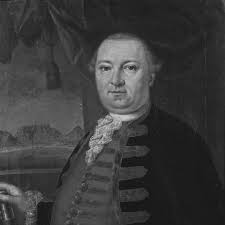
Ryk Tulbagh was born in Utrecht on May 14, 1699, and grew up in Bergen op Zoom. At 16, he enlisted with the Dutch East India Company (VOC) and sailed to Cape Town on the ship Huys Terhorst. He quickly rose through the ranks, becoming a temporary assistant to the Council of Policy in 1716, with his appointment made permanent in 1718.
Ryk Tulbagh continued his ascent within the Company, becoming Secunde (second-in-command) in 1739. On February 27, 1751, he was appointed Governor of the Cape. In 1725, he married Elizabeth Swellengrebel, who sadly passed away in 1753.
Ryk Tulbagh and the war on waste
Tulbagh is particularly remembered for implementing a 124-provision sumptuary law to curb extravagance. This law reserved the right to decorate carriages with the colonial coat of arms exclusively for the governor and restricted Council members’ use of livery on their coaches. Lower officials and their wives were forbidden from carrying umbrellas, a status symbol and all women were banned from lining their dresses with silk or velvet. Trains of fabric on gowns were also forbidden.
He also enacted the Tulbagh Code of colonial slave law in 1754, which imposed fewer restrictions on slaves. The death penalty was reserved only for slaves who killed their masters, with lesser offences resulting in forced labour. Slaves were allowed to practice trades, support themselves, and even buy their freedom or the freedom of others. These emancipated slaves, known as Vrijswarten, were given equal legal status to white settlers.
Tulbagh introduced civil services such as road maintenance, firefighting, and policing. An academic at heart, he was proficient in Latin and French and enjoyed the company of foreign intellectuals, including botanists and astronomers who visited the Cape. He also established the first library, housing books donated by Joachim Nicolaus von Dessin, the secretary of the orphan chamber and guardian of estates.
Tulbagh played a significant role in managing the smallpox epidemics of 1755 and 1767, which devastated the Khoekhoe population and killed many settlers and slaves. The second wave of smallpox claimed over 500 lives and wasn’t fully eradicated until 1770.
In 1770, Ryk Tulbagh declared the Gamtoos River as the eastern border of the Swellendam district and the Swartberg mountains as the northern border, though he was unable to defend these boundaries.
Ryk Tulbagh died in 1771 and was buried in the Groote Kerk. The town of Tulbagh was originally known as “Land van Waveren’

